NABA 2.0
DANCING WITH AUDIO GUIDES
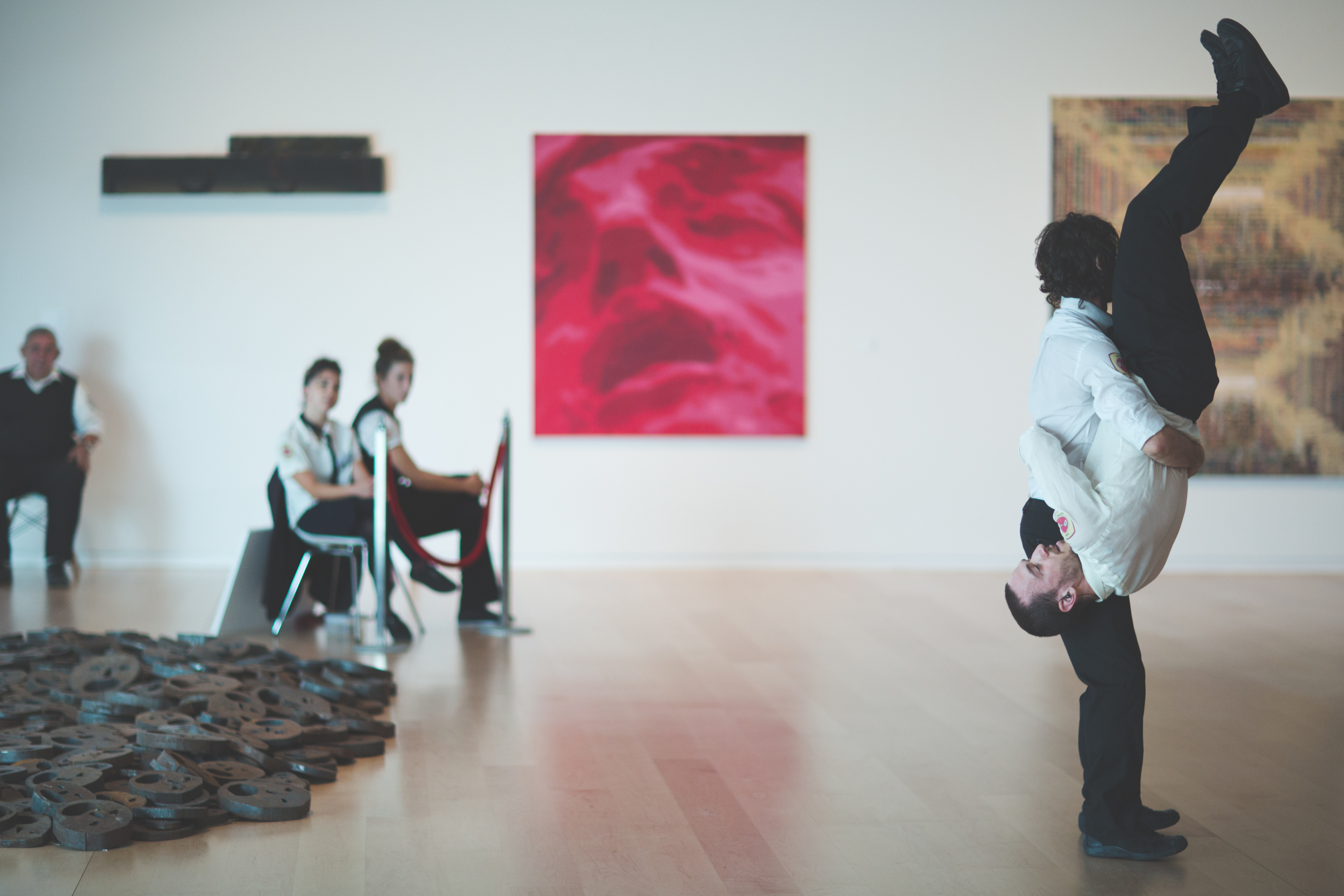
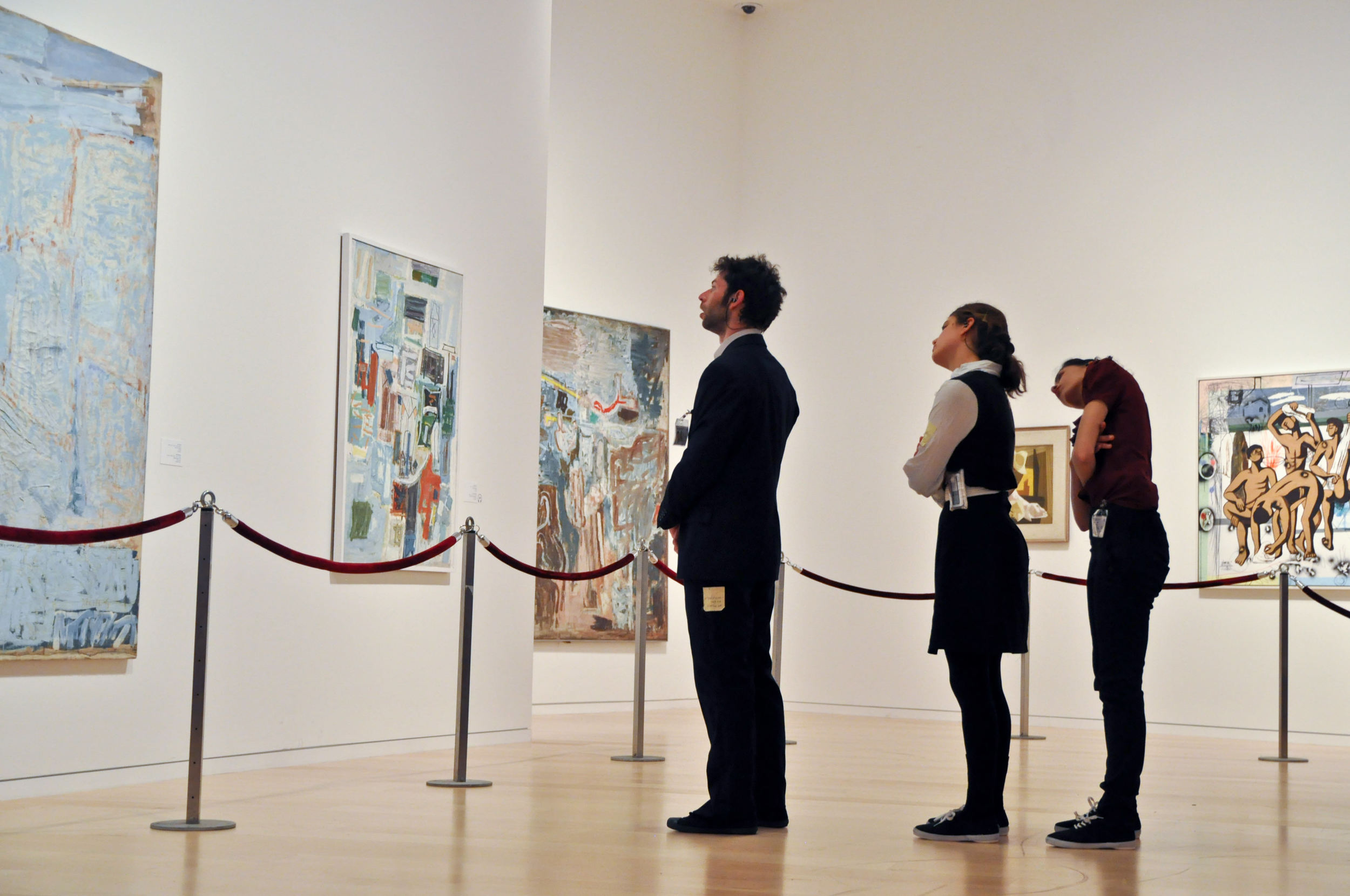
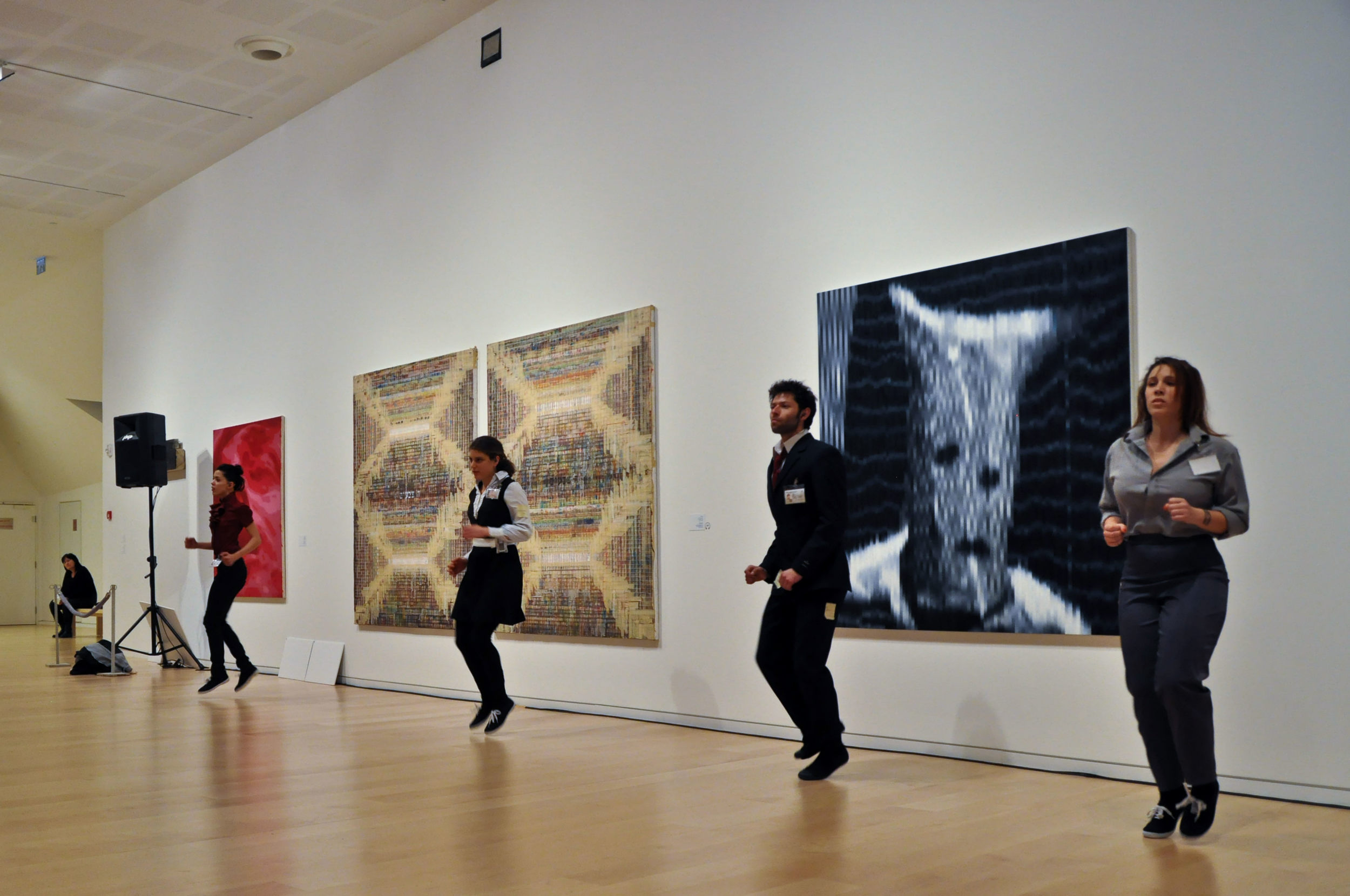
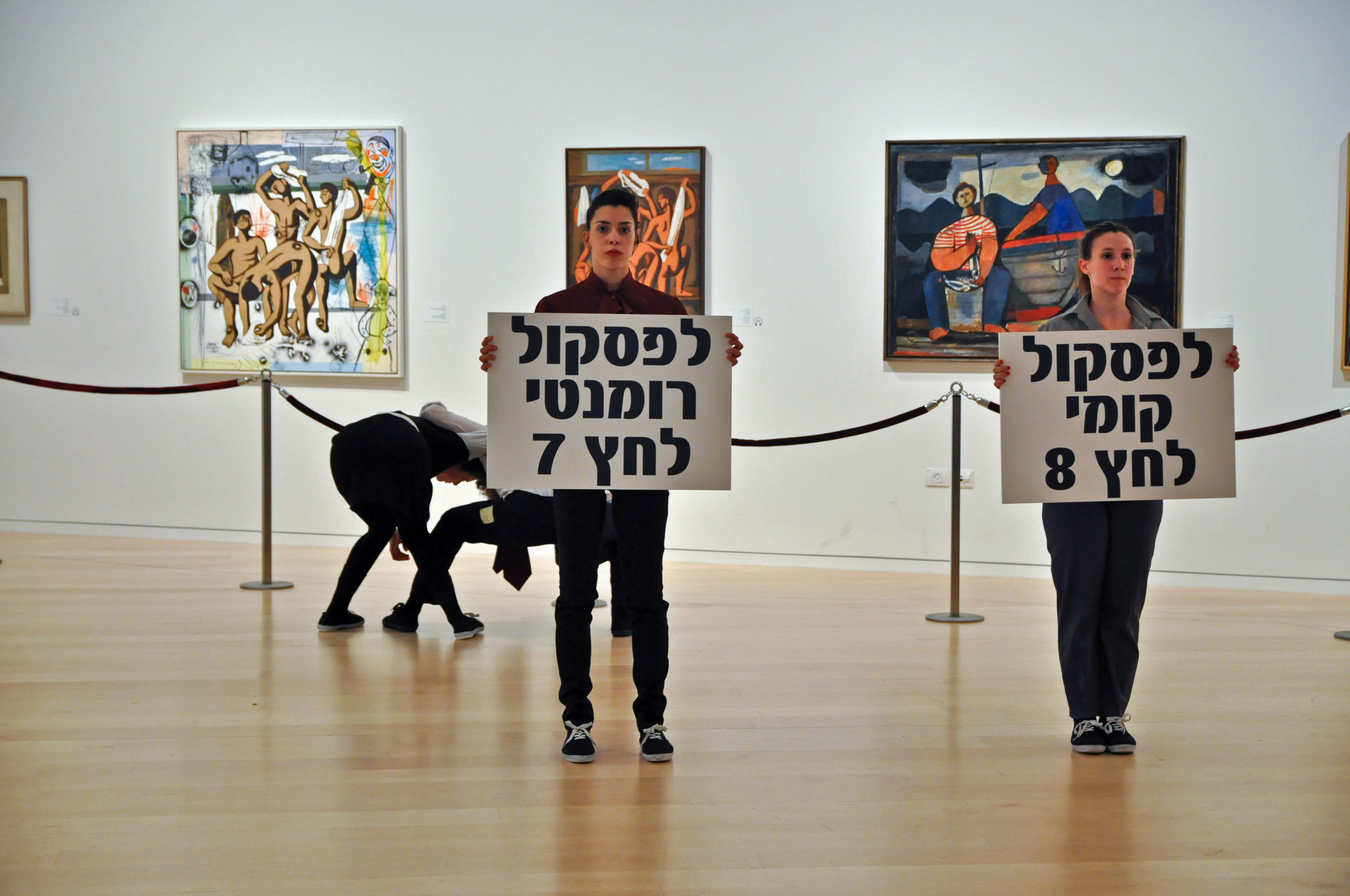

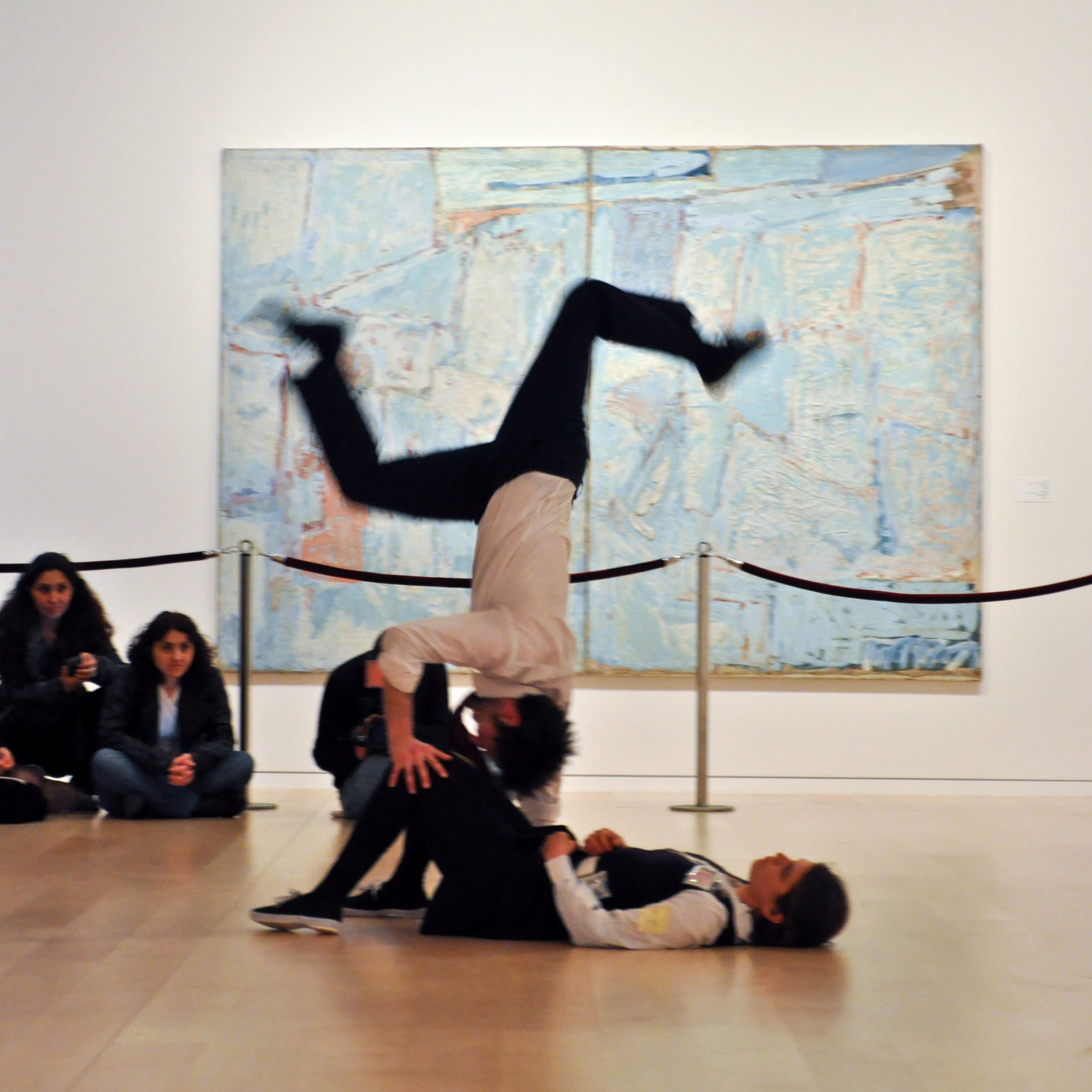
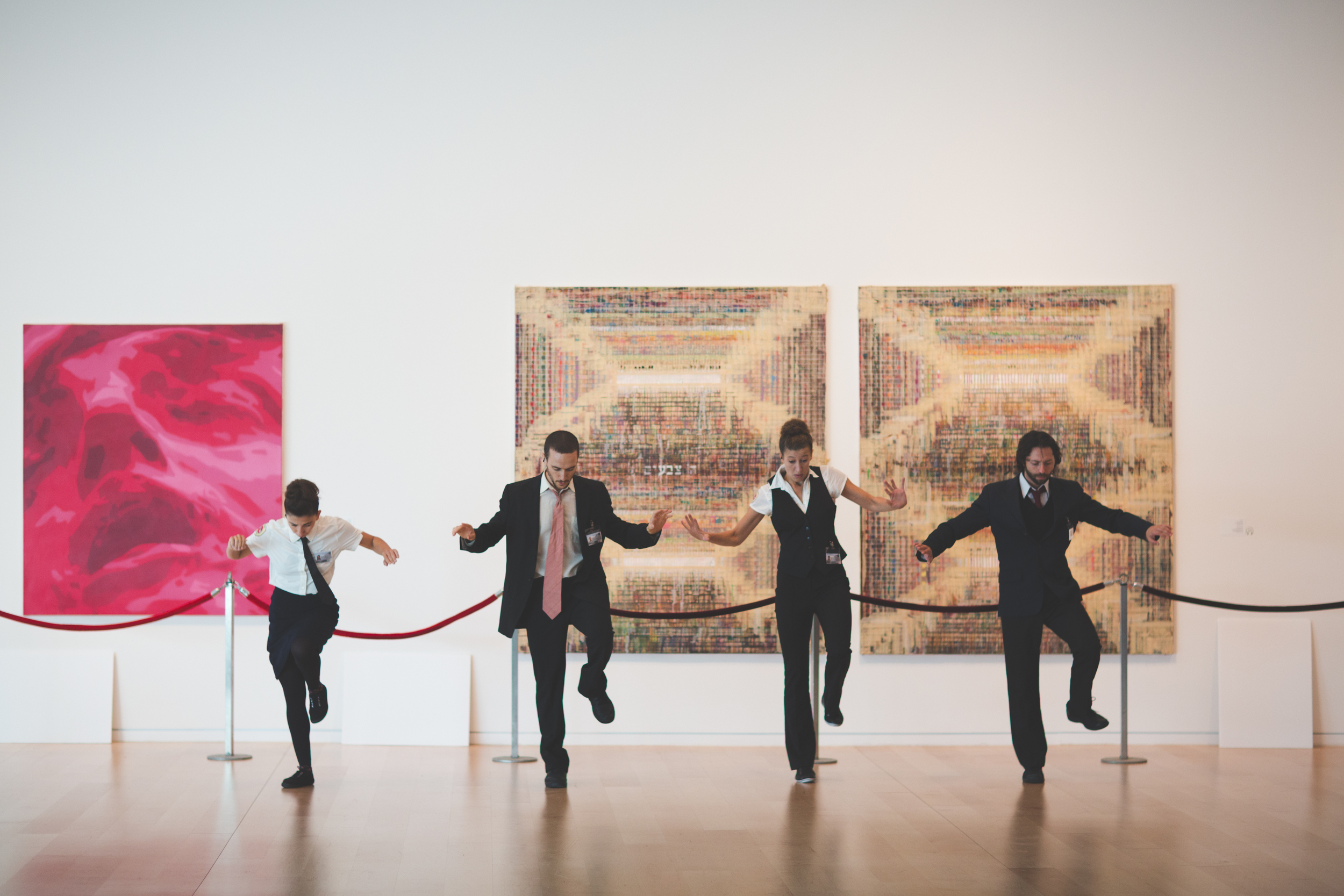
NABA 2.0 is an innovative interactive dance work set in a museum’s galleries, inviting audiences to be an active part of the performance by choosing their own soundtrack using audioguides.
The performance is led by four unusual “museum guards”, who take viewers on a choose-your-adventure journey, animating the artworks and architecture of the museal space.
The work premiered in 2013 at the Tel Aviv Museum of Art and has since toured across Israel and is now in residency at the Israel Museum in Jerusalem.
How does NABA work?
- Each viewer is handed a specially pre-programmed audio guide with a personal set of headphones. The device is loaded with numbered audio tracks.
- The show is divided into chapters. Upon instruction from the performers, each viewer can choose which track to listen to. The sound for the performance comes exclusively from the headphones, as opposed to outside speakers, allowing – upon their choice – for two viewers standing shoulder to shoulder to simultaneously listen to different tracks.
- Audio tracks range from various musical selections and audio clippings, to original texts and other unexpected surprises along the way, all inspired by and reacting to the specific museum setting. What the viewers hear will inevitably change how they see.
For every museum, the choreography and audio selections are reworked and adapted. The audio tracks are designed to inform and alter everything that fills the viewer’s prism: from the unique architectural attributes of the space and its history, the art works present, to the artists behind the works, the performers in front of them and more. We research the exhibition and spaces in which we perform, and collaborate with the museum’s curatorial team to collect the relevant materials.The choreography is set to correspond to and engage with the space, the artworks and the audio choices.
Costumes: Inbar Nemirovsky
Sound Design: Dudi Sofer.
Audioguides by Acoustiguide
Original Cast: Inbar Nemirovsky, Gil Kerer, Einat Betzalel, Idan Porges.
“There was an exciting feeling of an underground experience less reminiscent of a visit to the museum and more like entering a desirable club after hours. There were beautiful moments in which the dancers brought the artworks to life, be it human, animal or statue. It all felt alive. Ruttenberg is a witty and original choreographer.”
“Naba 2.0 by Dana ruttenberg Dance Group is a surprising, experiential, enjoyable, amusing and pleasurable show. During the show, not only does every viewer choose what he will hear, but we also move around the museum space, taking an active part, whether standing, sitting or lying down. The soundtrack itself is also surprising and combines texts with musical works from varied styles. The museum’s space is an intergral part of the experience, and the works shown in it are treated in a way that allows the audience to look at them anew”
“The brilliance of the new version is based on the choice of space - the Israeli gallery of the Tel Aviv Museum - as the new meeting point, and to that aim Ruttenberg has created brand new choreography for four dancers. As in the past, she again succeeded in creating a polyphonic multi-faceted dance work, which very different musical scores illuminate in unique ways.
Ruttenberg explained that NABA was born out of the desire to “add a new dimension to dance”, to bring “audience that have yet connected to contemporary dance” closer and to turn the viewers into active participants, if not in the actual dancing on stage, then at least in determining the sounds and music they will hear during the piece.
To that aim, she supplied each member of the audience with an audio guide, such that is used in museum tours, and a pair of headphones. It worked and succeeded in awakening the audience from their pre-set passiveness…intriguing duets evolved, impressive solos and intricate group sections in a movement language expressing alienation, intimacy, tenderness, agitation, escape and even inner humor.”
